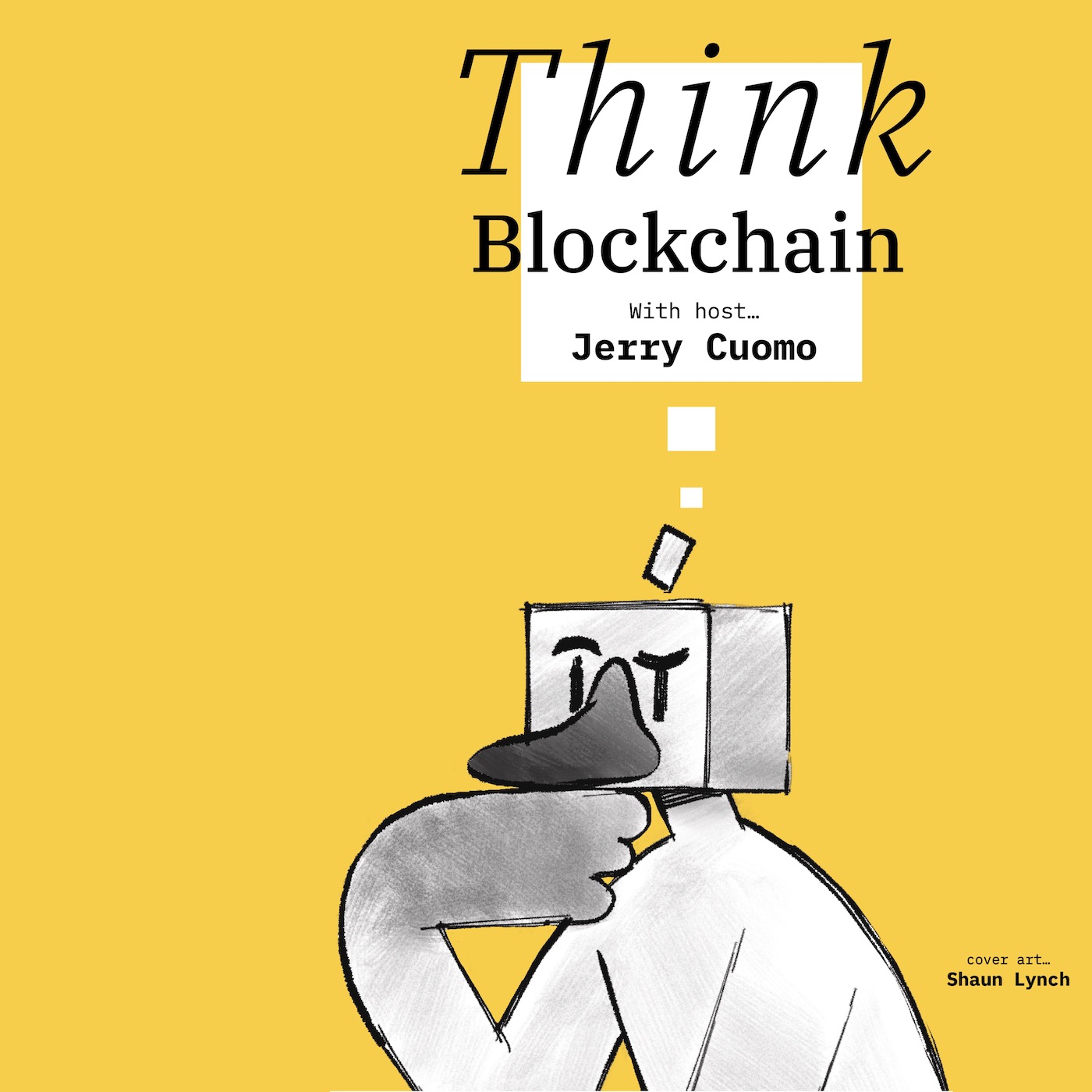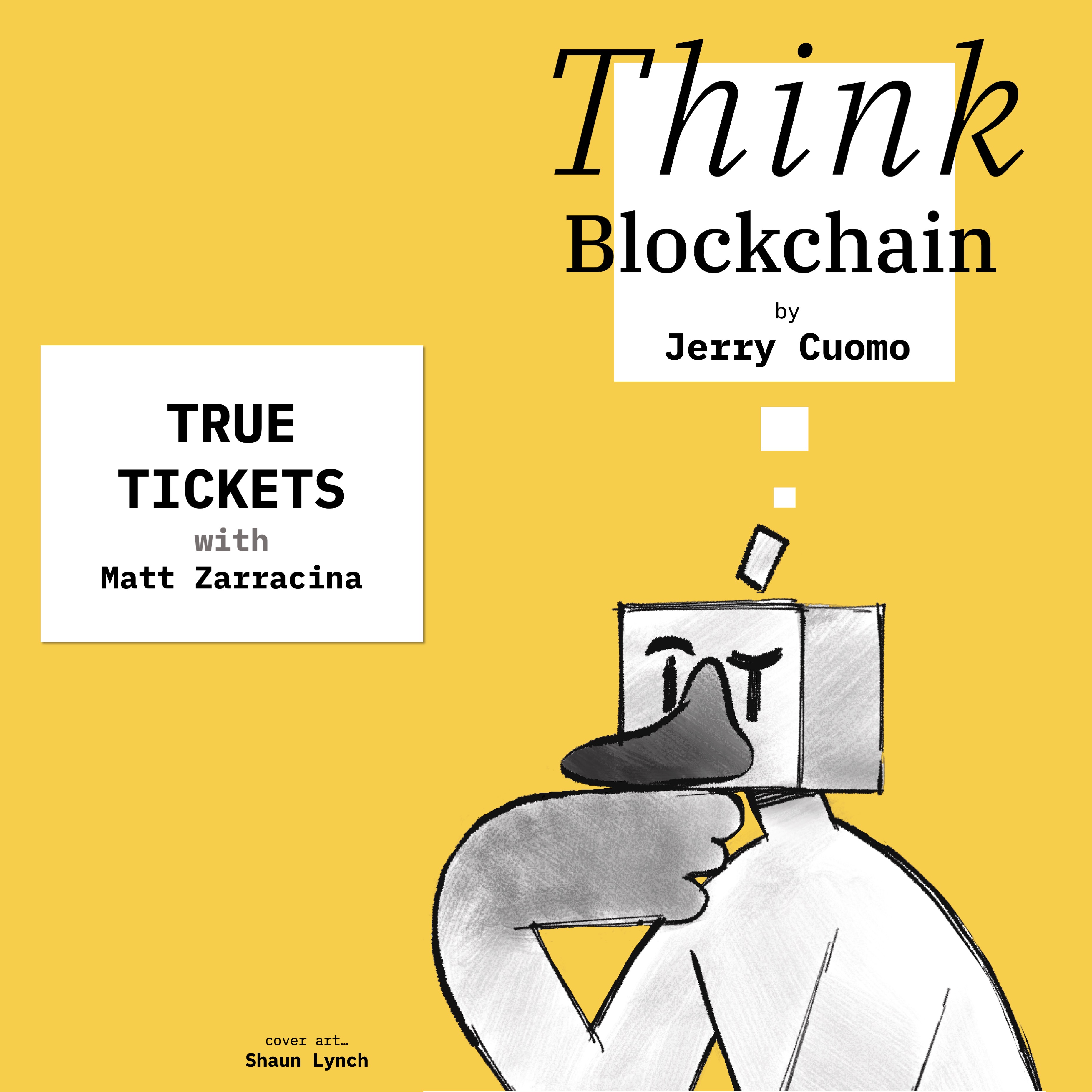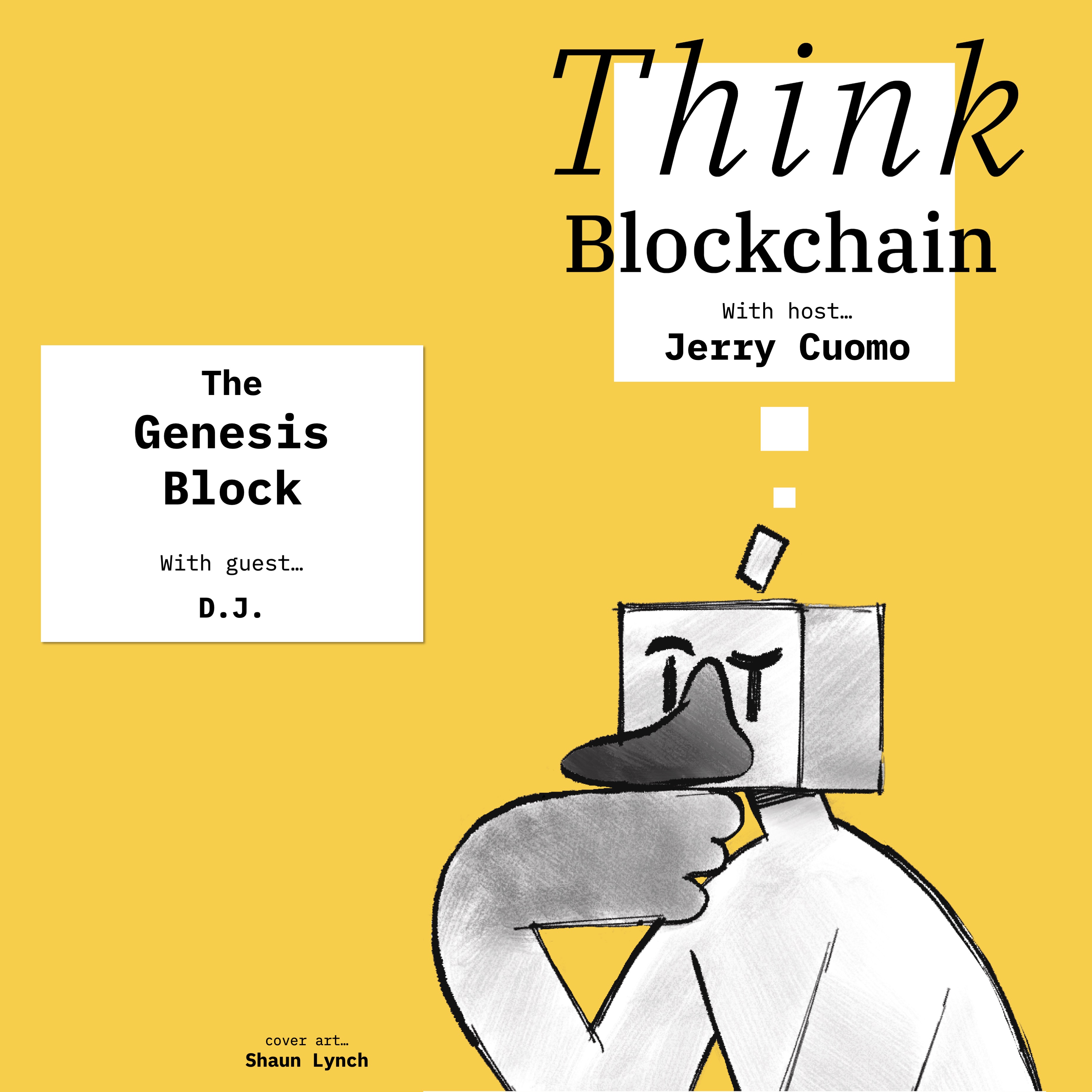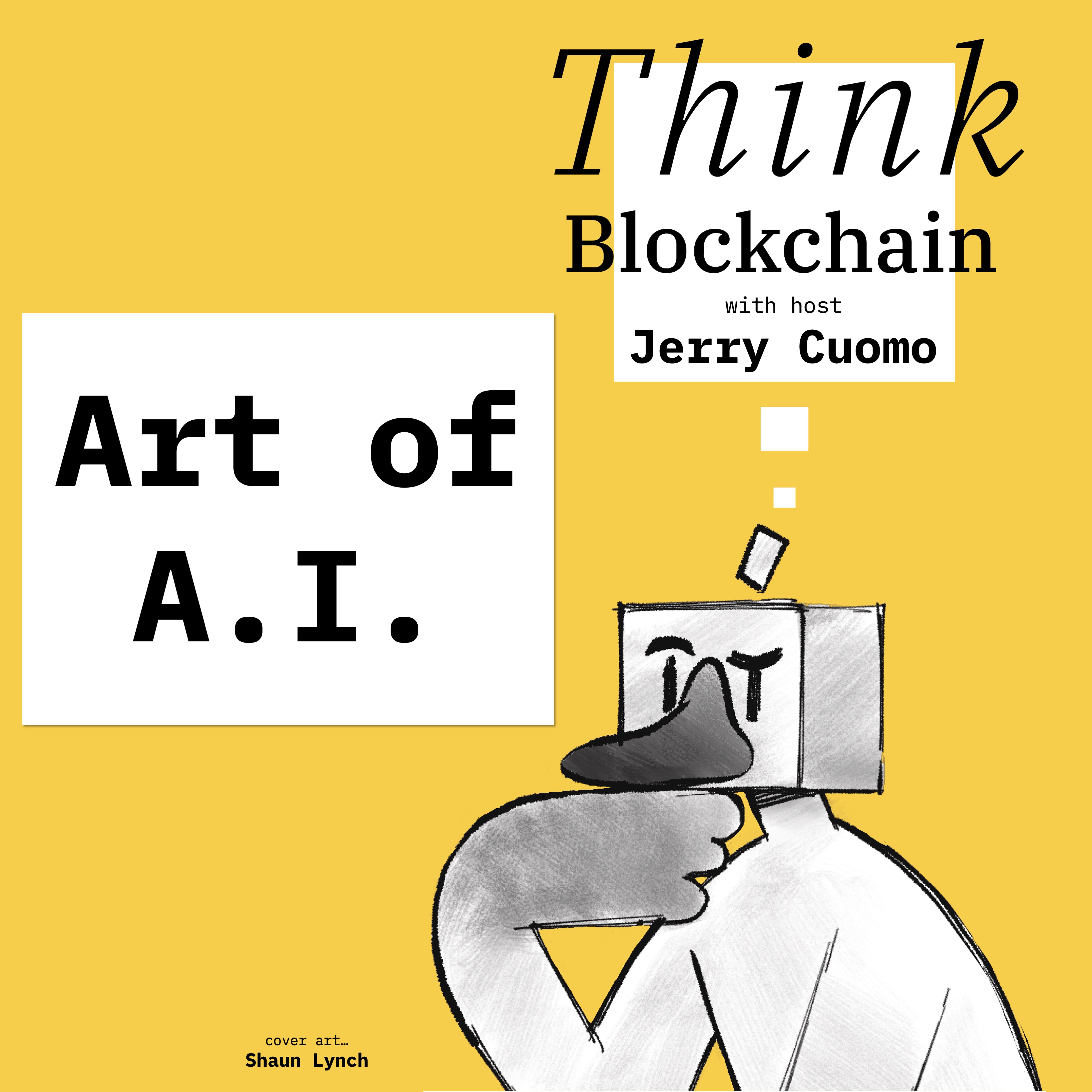Metaverse
- 0.5
- 1
- 1.25
- 1.5
- 1.75
- 2
DJ: You're listening to Think Blockchain with your host Jerry Cuomo.
Jerry Cuomo: Thank you DJ and welcome all to Think Blockchain, a podcast for those curious about blockchain's evolution to an ethical web. Three future folks. Some years ago I read the book Snow Crash, a science fiction novel by Neil Stevenson. The book explores the concept of a virtual reality- based successor to the internet known as the Metaverse. The novel features a protagonist who becomes embroiled in a conflict for control of this metaverse. Very cool. Then years later, another novel on the same topic came around, I think it was about 2011, and it was called Ready Player One. While I didn't read this one, I did watch the film that came out later and was directed by Stephen Spielberg, both Snow Crash and Ready Player One, explore the Marvel and potential impact of virtual reality on society. And folks, this is a great warmup to today's episode, and I highly recommend these two books. Well, in today's world, the concept of a metaverse is becoming more real and more popular as virtual reality and augmented reality combined with blockchain and AI technologies. And we're now seeing a glimpse of a future internet that has the potential to greatly enhance our ability to connect and engage with the world around us. My guest today is Chris Hay. Chris is an expert on systems of engagement and is a distinguished engineer here at IBM. He has a decorated history of applying web, mobile, blockchain, and now the immersive metaverse to help clients do the extra ordinary with technology. So with that, I'd like to welcome Chris to Think Blockchain. Welcome Chris.
Chris Hay: Hey, Jerry, how you doing?
Jerry Cuomo: So the Metaverse, why are you excited about the Metaverse?
Chris Hay: So I think the Metaverse is super exciting. I think one of the things about the Metaverse is that it unlocks us from the traditional channels. We've lived in this kind of web and mobile channel for a long time, but if you start to think about what the possibilities of Metaverse is going to give us, it's going to be not just things like virtual reality, which a lot of the buzz is going to be about, but it's going to be about augmented reality. And then especially when mixed reality classes come along. Probably one of my big moments where I realized the metaverse, there was probably two moments that I realized the Metaverse was going to be huge. One was I have a pair of those Ray Band stories, the glasses with the audio headphones, and I found myself starting to take calls on it. But then one day I was in London and it was giving me turn by turn directions as I was just walking in the street, no airpods in or anything like that. And then I realized, yeah, oh my goodness, if I had a heads up display, that would be amazing. And then I took that a little bit further and I was like, what if I was in a store and I could just look at a mobile phone and then I could see my personalized price, and then maybe if I wanted to speak to an assistant rather than waiting 20 minutes for an assistant to notice that I exist, then just a little assistant will appear in my glasses and I can talk to them and that was a real moment. And then the other one was during Covid times, right? I mean, we do so many meetings and virtual reality at work and having been behind these 2D screens, just putting all my virtual reality headset, being in a space, hanging out with my colleagues, brainstorming things together. And it really feels as if you're in the same space. It's just an incredible experience. And they were the two moments for me where I was like, the metaverse is a thing and let's not pretend otherwise.
Jerry Cuomo: All right, Chris, you've excited us. You've teed this up, but let's pause for a second. Tell us a little bit about yourself. How did you get to here? You're a leading edge technologist and IBM consulting who drives our work around. How did you get here?
Chris Hay: One of my defining moments was I was one of the original developers of M- Pessa back in Africa, which is really a bit of a fun one because even before the, so this was back in 2006, started working on that. And just before the iPhone launched, we launched M- Pessa. And if you don't know, essa, it's a mobile money system where you could send money from one person to another, but it would be done over SMS. So you could do on the tiniest of feature phones with no smartphones. Cause they didn't exist at that point. And it's now biggest mobile money service in the world. And when you were working on that, it meant I got away from traditional web and mobile channels, right? Yes. Here is channels like USSD, like SMS, and then I saw the innovations because we would built these transactional systems and then what would happen is folks in Kenya, Tanzania would then start building e- commerce stores on top of SMS messages. They would literally scrape the messages and then people would create microfinance solutions like solar panels because it was cheaper to do lending of solar panels than it was to pay for the oil to light your room. And when you start to see that innovation, I realized that this isn't just about web and mobile, this is about all channels and accessibility across the world. And when you realize that that sort of fast forward however many years later when I start working on innovation solutions with customers today or now in the metaverse, it's always about how can we bring this different type of innovation? It's always got me thinking in a different space, different channels. And so technology that really helps people really moves the world on and technology for good that's what gets me excited.
Jerry Cuomo: Beautiful, beautiful. Talk to us about your definition of metaverse and perhaps a little bit about the applications in enterprise. I think we can see some of the consumer applications pretty vividly help the enterprises through what this means to them. Maybe even give an example or two of where the metaverse is circa 2023.
Chris Hay: So the first one is a definition of a metaverse. I think that's also a really difficult one because everybody wants to throw a blockchain and everybody wants to throw in crypto, everybody wants to throw in technology, and I think they all form a part of that. But I think if I was to bring it to a definition, it makes sense. For me, it's about, I think 3D is at the heart of it. Now that's not to say that will be the case necessarily in the future because you're going to have all these audio channels, et cetera, but if we bring 3D, we bring immersion, those immersive experiences, that's probably the real thing to kind of focus on. But if I bring it to its core, it's about bringing the digital and the physical world together in one space makes me think that we move towards the next generation of the internet. So things like the openness and the same way as the internet is open, then the metaverse needs to be open as well. Not being controlled by any one platform, it needs to be interoperable, et cetera. And there's some of the things for the future, and that gets you into the whole providence and assets and blockchain side of things. But that immersion experience, bringing digital and physical together to imagine these new experiences that's For me. For the enterprise, I think the possibilities are limitless. We know a lot of the consumer ones, but even in the enterprise space, one of my favorite examples would be, let's say I want to imagine what my cloud data center is going to look like, how many availability zones, what my CICD pipeline is. Lots of technical phrases, but essentially I want to imagine what my new architectural design is. Well, I can get into the metaverse space. I've got a 3D virtual environment and I can start to visualize it different ways, interact with metaverse assistant and AI and say like, okay, generate me this, or I can design what it is. I can hook up to my IOT systems and I can get a visual representation of what my space is. So maybe I want to see I've got these containers and these three availability zones. And then I can start to then say, well, what if I change this? What is the impact on my application? Now, show me that business flow in the metaverse. How does that interact with the physical? And then you can sort of say, okay, simulate this, change this. So using those immersive environments to visualize your processes and see what your impact is, and then be able to bring your colleagues in and say, okay, are you seeing the same thing as I'm seeing? But that's the virtual reality, but then augmented reality at the same, right? Yeah, I don't need to be in a physical space. Maybe I meet up with my colleagues who are in an oil rig and they're doing a safety check of a job. So I can then come together, have an expert say, okay, flick this switch because that's going to make the difference. Don't touch that one because that's not a safe one. But again, the simple one that I said there, just being able to do meetings, put your post- it notes up on the wall, do a design thinking session, and then not have the cleaners remove the post- it notes the next day, be able to come back and see it again and possibilities are limitless.
Jerry Cuomo: I love what you're saying there. And it kind of drums up visions of digital twins. In fact, at one point, I think I even started writing a patent up on this, which is mood music. So when you enter a space, you have the mood music. If you hear the Star Wars death march, it's because you're experiencing issues and you have outages in your data center. So just when you enter the virtual data center, you're hearing the moon music and you're like, uh oh, what do I need to be aware of? Et cetera.
Chris Hay: I think that's one part of it. Today we talk about digital twins from a physical to digital, but I actually think that we're going to get to a world where we're digital to digital. So therefore digital twins could be of your processes. So it doesn't necessarily need to be a physical pro product. So if I come back to that CICD pipeline, your development environment, so think of GitHub, your GitHub actions. So I build this, I do my unit tests, et cetera. That's a digital process. But when I start to think of that in an IOT sense, right? Things like simulation, what happens when I change this value? How does that look in the metaverse when this kicks off, kick off that. Then how does that relate to my physical deployment? So I think we are in this physical to digital, but I think the digital to digital's going to be really important soon then.
Jerry Cuomo: Perfect. Let's talk technology for a couple seconds. Where do you see as the key technology ingredients? You hinted on some of them, but let's kind of curious to hear your top three list or four list of technologies.
Chris Hay: Oh, I think there is a ton of technologies. So I think 3D is really important and there's a lot of competing standards just now. So I think that investment 3D that people are going to have, so take your existing models and then convert them into the 3D versions. That, as soon as you start to do that, the data becomes huge. So now you're at this point, how do I move that large amount of data because I'm going to be representing these spaces. So that leads you into saying, I need to start thinking about edge networks, CDNs, I need to think about caching, I need to think about ai. That's going to become really important in that space. Even simple things like cloud become super important so that you can host those spaces event streaming so that you can pass that data in, IOT systems we talked about earlier as well. So I think there's a lot of key technologies that kind of really going to come to the forefront there. But the investment in 3D, the investment, AI, cloud, et cetera, I think is the big thing.
Jerry Cuomo: Beautiful. This is think blockchain. So tell us a little bit about the relationship of blockchain web three and Metaverse. I've heard the extremes. What's your point of view there? What's the relationship?
Chris Hay: So if I think about what I said earlier about the Metaverse being interoperable and that there is going to be no pot one platform owning, then that means you have to have a method of being able to share. So it's simple things like I'm a big fan of sunglasses. I wear Ray band sunglasses or ugly sunglasses all the time. So when I move from one space to another, I want to be able to take those sunglasses with me. That is my digital asset. My avatar represents me. Again, a digital asset is there. So when I think about it, if I'm going to bring that avatar or those sunglasses, there's a set of technologies that are really key for being able to move from these spaces, which is what is my method of distributed storage? That's an important one. If I'm going to hold 3D models, we're going to have interoperable standards. For example, I mentioned things like glbs, fbs, uds that are earlier, but actually you need to host that somewhere in a distributed fashion so other people can access that. That's where web three best technologies like IPFS come in. I think that's probably going to be more and more of a key piece going forward that already powers technologies like NFTs today. If you look underneath an nft, you're going to see IPFS is actually what's hosting that particular asset. Now, if we go a layer above there, then there's all the metadata associated with that. So things like avatars and even objects, they're not necessarily going to be compatible from world to world necessarily. I think metadata is going to start to change that. So if I have something like let's say I have a ready player, me avatar, so I could have a piece of metadata in my asset on the blockchain, it says I own this asset and this is compatible with Ready player me, and therefore it's compatible with world X, Y, Z. But if somebody has a different avatar system, I may want the same pair of RayBan sunglasses and the ownership of that, but I may then tie that to a different avatar type. So therefore the ownership of the asset, the provenance, this is an official pair of RayBan sunglasses. This is where we got this from. It's not a fake becomes key. The avatar becomes key as well. And then my identity itself. So let's say we're having this chat and let's say I'm in an IBM world, then I would want to identify as an IBM employee, I should be able to look at the avatar and say, tick, this is an IBM employee. If we then went to a conference and maybe we're in an IBM booth, somebody else's conference, but you still want to know, am I speaking to Chris and Jerry about IBM who are authorized as an identity at that point or is it some random person wandering around a blue shirt? The blockchain allows us to start to say, this person is really this identity. They are that person. We know who they are. We can do the blue tick stuff. And then in some environments, I may be an IBM employee, but I'm at my kids' party. I don't want people asking me IBM questions there, right? I'm just hanging out as Chris. So my identity, how I interact with the world, how I portray myself to the world, the assets that have the provenance needs to come from somewhere, and that's where a blockchain has its point of play.
Jerry Cuomo: That makes sense, Chris. Unlocking specific data, like identity, like metadata associated with your reputation, the ability to build trust beyond any single organization, lifting your data out of a single corporate database and putting it in a neutral zone someplace in the metaverse where it can be equally accessed, whether you're at a party or at a corporate event. Makes a lot of sense. All right, let's wrap up with the last question, which is a combination of where do you see this going in the future? So maybe just a very quick future glimpse, and then where do people follow up if they want more information?
Chris Hay: In the future I see as in crazy worlds, and I really do see those crazy worlds happening. So the mixed reality glasses I don't think is too far away. I think we'll get to all that digital hologram stuff and all that, but I don't like talking about that future too much because I think that seems too farfetched for everyone. So therefore people don't focus on the right now. And the metaverse is right here, right now. So I like to talk about the omnichannel strategy and invest in OS key technologies because those people who invest in that today are going to be successful and be able to make use of today's technologies but even in the future. If I'm true on where I think is where we're going to go, I think the metaverse, it will just be the next generation of the internet, right? It will. In the same way, we're not talking about, oh, which internet platform am I going to go on today right?
Jerry Cuomo: Right. What browser are you using? Right.
Chris Hay: Exactly. And I think that's the way it's going to end. I think the number of channels are going to increase the ways we could collaborate a number of devices. I think avatars and things are going to become more unrealistic. I think AI, we're already seeing things like voice cloning. We're seeing things like multiple translations. Isn't that great? I can go in one room, I can have a conversation real time. You can be speaking English, I can be speaking French, and next to me can be speaking Klingon. It doesn't matter, right? That future is not that far away. Some of the technology elements are further away, but that's the general direction that we're heading into. And it's exciting and it's going to be fun.
Jerry Cuomo: And as a curious listener, where would you go next?
Chris Hay: Where I would go next? And it's going to be really boring. Start learning about 3D. Start thinking about realtime and APIs, right? All those boring foundational stuff. Because if you haven't sorted out your APIs, if you're not investing in AI, then what are you going to do in the Metaverse? You haven't got the foundations in place. Now those foundations are important, but you need to build those foundations at the same time. Experiment, go get a headset, go put augmented reality on your phone. Start building some stuff, right, and start being blown away. How quickly you can do that, because you can start putting even simple prototypes together in hours and start creating new experiences. Experiment, but invest in your core at the same time.
Jerry Cuomo: Okay, Chris, on thank you for joining us today on Think Blockchain. Thank you.
Chris Hay: Thank you.
Jerry Cuomo: Okay, then it's a wrap. So folks, it's time to go get a pair of 3D goggles, and as Chris says, experiment with the metaverse. His point is well taken that once you start experimenting, it becomes much clearer how best prepare for the Metaverse. And I've edited a few links to the show notes for more information on the Metaverse and how to connect with Chris and I to explore applications of blockchain and the metaverse, which takes me to one last thought. If a tree, or should I say a podcast falls in the woods? Does it make a noise? Well, think blockchain has a few sponsors who will be helping us make some noise by providing support for marketing the Think Blockchain podcast and book. Since royalties from the book are being donated to the American Cancer Society, we want to get the word out and make some noise. So this episode is brought to you by IBM. IBM continues to be a thought leader and world class implementer of blockchain solutions globally. Blockchain for business is IBM's thing, and the Think Blockchain book is filled with examples like FU Trust and the New York Excelsior vaccine Pass all built with IBM. IBM puts the Think and Think blockchain. I'm also proud to announce that this podcast is brought to you by Kaleido. The blockchain business cloud with Kaleido doing business on the blockchain has never been easier. Their zero gas NFT platform, institutional grade digital Asset Solution consortium as a service and side chain services allow enterprises to launch web three applications in a 10th of the time. That's Kaleido. Launch your Web three application today on kaleidos free starter plan @ kaleido. io. Closing thought. If you like this podcast, I suspect you'll love my new book, Think Blockchain. So get your copy now by clicking the link in the description of this podcast and buying is donating to fight cancer. Well, that's it for today. Thanks for joining. This is Jerry Cuomo, IBM fellow and VP for technology at IBM. See you soon on an upcoming episode.
DESCRIPTION
In this episode, Jerry Cuomo and systems of engagement expert, Chris Hay, step into the metaverse and discuss how this new medium holds the potential to greatly enhance our ability to connect and engage with the world around us.
Listen in to hear Chris demystify the metaverse, with examples of how to utilize its immersive engagement model to advance day to day business. Chris and Jerry also discuss the connection between the metaverse and blockchain technology and how blockchain could be used to create a decentralized system for identity verification and access control within the metaverse, allowing for greater security and privacy for users.
Chris is a Distinguished Engineer, at IBM Consulting. To read more about what Chris and IBM is up to in the metaverse space read:
Beyond the Hype: Explore five ways retailers and brands can drive value in the enterprise metaverse.
And if you’re enjoying these podcasts, we suspect you’ll enjoy Jerry’s new book, also titled Think Blockchain. Order your book today here thinkblockchain.org… with royalties donated to advance cancer research.
This podcast is sponsored by IBM Blockchain and Kaleido. Comments by Jerry, DJ, and Guests are their own and don't necessarily represent the sponsors position or opinions.
Today's Host

Jerry Cuomo
Today's Guests








